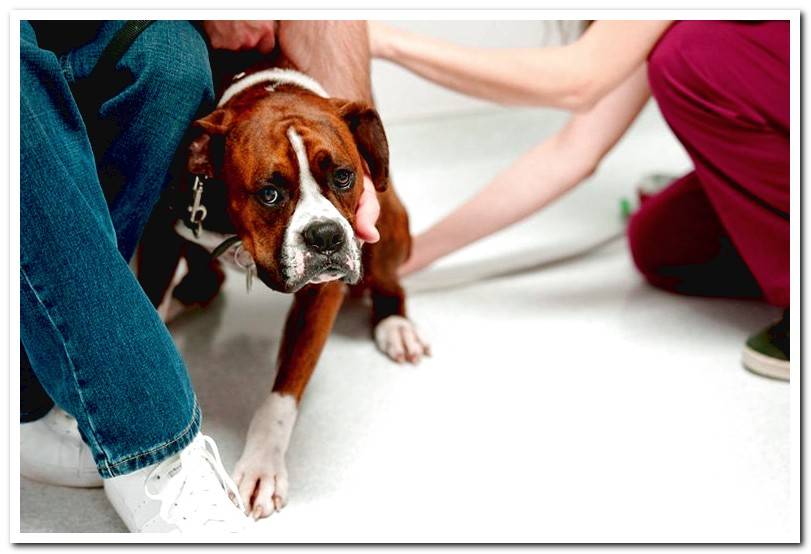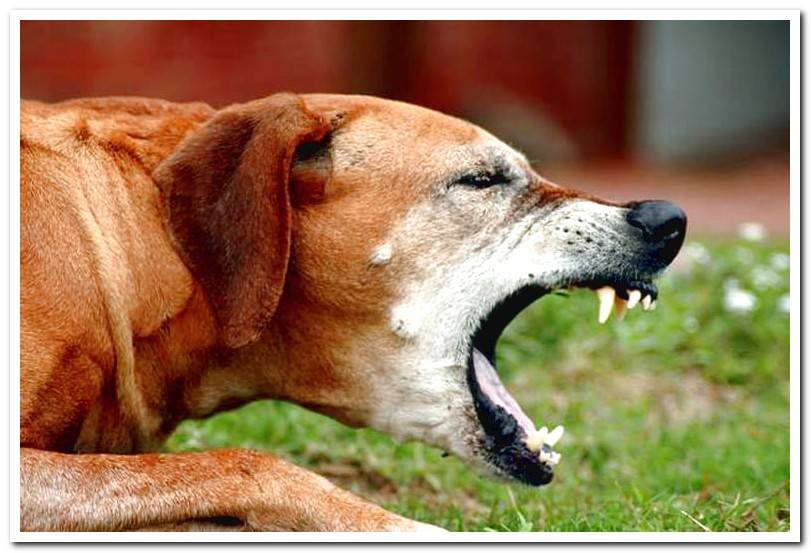
Also called gastric, duodenal, or gastroduodenal ulcers, these ulcers are lesions on the mucosa of the digestive system that put our dog’s life at risk and that may have their origin in diseases or drugs.
Below we will see what they are, what causes them, what tests are needed to diagnose them and how they are cured. Unexplained vomiting that may contain blood is a sign of alert and seeking veterinary assistance.
Index of contents
- 1 What is a stomach ulcer?
- 2 How does a stomach ulcer occur in dogs?
- 3 Stomach ulcer symptoms
- 4 How is an ulcer diagnosed?
- 5 Why are stomach ulcers dangerous?
- 6 Treatment of stomach ulcer in dogs
- 7 Care for dogs with osteoarthritis
What is a stomach ulcer?
An ulcer is nothing more than a wound that, in this case, occurs in the lining of the stomach or duodenum. Different causes explain these injuries that can be more or less deep. On it depends its severity and its danger to the health of our dog.

How does a stomach ulcer occur in dogs?
The most common cause of ulcer in dogs is the consumption of corticosteroids or non-steroidal anti-inflammatory drugs (NSAIDs). It may be due to prolonged administration of these drugs or due to occasional taking due to an accident or incorrect self-medication. This is what can happen when we give the dog aspirin or ibuprofen without veterinary control.
These types of products have stomach ulceration among its adverse effects and it seems that dogs are especially sensitive to it. In addition, liver, kidney problems, intense stress or chronic gastritis can also be linked to the appearance of ulcers.
Finally, mast cell tumors, which are cells of the immune system, are capable of producing histamine, a substance that enhances acid secretion, which affects the formation of ulcers.
Stomach ulcer symptoms
The main sign of gastroduodenal ulcers is vomiting that can contain blood, although many times this presence is microscopic and we will not be able to appreciate it with the naked eye. Some ulcer symptoms are nonspecific, complicating and delaying diagnosis.
The following stand out:
- Vomiting blood, which may be digested (with the appearance of coffee grounds) or fresh and clotted.
- Sporadic vomiting.
- Chronic vomiting
- Weight loss.
- Anemia.
- Tarry stools due to the presence of blood.
- Bleeding that, if rapid, can lead the dog to a state of shock and death.

How is an ulcer diagnosed?
Through a test known as endoscopy or gastroscopy, which allows it to be viewed directly. Specifically, the most superficial ulcers are seen as areas where the mucosa of the digestive tract is inflamed, with injuries and pus. A perforation is visible in the deep ones.
The size of the ulcers is variable and we find them from one to several centimeters in diameter. There are simple and multiple ones and it is more common for us to locate them in the stomach than in the duodenum, which is the first portion of the small intestine.
Why are stomach ulcers dangerous?
A clinical picture that includes hemorrhages must always and promptly be attended by a veterinaryn, since it is a situation in which the life of the animal is put at risk. Also, a perforated ulcer can reach the abdomen, causing peritonitis It can also be fatal.
Peritonitis is inflammation of the peritoneum, the membrane that covers part of the abdominal cavity where the abdominal organs are located. It is an emergency. The dog can die quickly, in just a few hours.

Treatment of stomach ulcer in dogs
In dogs in which an active gastrointestinal bleeding is found, treatment goes through hospitalization, since they need intensive observation and care. Blood transfusions may be required. If the dog is being administered drugs with an ulcerating effect, they should be stopped.
The veterinaryn will prescribe us, depending on the clinical picture that our dog manifests, an adequate medication to control ulcers and protect the stomach. They are long treatments that we must continue at home following the professional’s instructions.
If a perforated ulcer is found on veterinary examination, treatment goes through surgery. The ulcers are curable but in some dogs they will be complicated to the point of being fatal. We must control the causes that predispose to the formation of ulcers as a preventive measure.
Care for dogs with osteoarthritis
Dogs that suffer chronic joint pain they usually receive a daily treatment with NSAIDs to control pain, since there is no possible cure. They are usually older dogs. Although they are prescribed together with gastric protectors, can form hard-to-resolve ulcers.
Controlling pain is essential for these animals to maintain their quality of life as much as possible, so treatment is essential. In any case, we should use the lowest doses we can and resort to other options without ulcer effects such as electroacupuncture or rehabilitation techniques.
